Affiliate Program Management for SaaS: How to Run & Scale in 2025

In this article
Is Affiliate Marketing Effective for SaaS?
How to Set Up an Affiliate Program & Manage it Effectively
How to Scale and Optimize Your Program
Conclusion
Picture this: your SaaS product is live, users are signing up, and revenue is trickling in. But something is missing, and growth still feels like rowing against the current. You’ve refined your onboarding, tweaked your ads, and even launched a blog. Momentum? Not quite. That’s where a well-oiled affiliate program (with wise affiliate program management, of course) changes the game: it’s a growth engine that pays only when it delivers.
Affiliate-driven revenue is hitting impressive highs. The global affiliate market reached $32.3 billion in 2024, and it’s climbing fast at roughly 10% CAGR. For SaaS in particular, affiliate programs are forecasted to grow at a 15.6% annual rate through 2028, fueled by the rise of partner-led marketing and demand for performance-based acquisition models, according to UserJot and WeCanTrack.
And that growth is a direct confirmation that affiliate partnerships can deliver compounding, predictable value without eating your CAC.
This article outlines why affiliates deserve a frontline role in your 2025 growth strategy, the trends reshaping top-performing programs, and provides a hands-on walkthrough from setup to scale.
Ready to see the compound effect of real partnerships? Let’s get the ball rolling.
Is Affiliate Marketing Effective for SaaS?
Short answer: Yes.
Affiliate marketing is often considered a nice addition to more substantial channels. But in SaaS, where recurring revenue compounds, it becomes a high-leverage, evergreen channel. Customers referred by affiliates convert around two to three times better than cold traffic because trust carries weight.
When is the right moment to start an affiliate program?
Here’s the real test:
- Do you have reliable conversion metrics? Trial-to-paid performance should be predictable.
- Do you have enough volume? Roughly 100 active users or $10K MRR typically gives you enough data to model affiliate economics.
- Is your billing system reliable? If onboarding, pricing, or renewals are messy, affiliate payments will be a nightmare.
If you tick those boxes, you’re past “dabbling” and entering “foundational channel” territory. Jump in too early, and you’ll hemorrhage money. Too late, and you lose the first-mover advantage in your niche, as well as the charm of early-phase enthusiasm.
The slip-ups that trip teams up
There are countless cases where affiliate programs stall before they start:
- Relying on cookie-only tracking: You are likely missing refunds, and you end up paying for transactions that never occurred.
- Offering lowball commissions: Affiliates simply ignore your program.
- Bulk-inviting affiliates with no vetting: Facebook groups full of coupon-style promoters usually don’t deliver value.
- Skipping affiliate onboarding: Signup forms aren’t a growth strategy.
- Never auditing payouts: Competitors swoop in with more transparency.
How to Set Up an Affiliate Program & Manage it Effectively
Most SaaS companies get excited about launching an affiliate program, and for good reason. But enthusiasm alone doesn’t make it work. What separates a scalable channel from a messy side project is setup, and 2025 offers far better tools (and fewer excuses) than ever before.
1. Choose the right affiliate program management software
Let’s not sugarcoat it: if your affiliate mangement software doesn’t integrate cleanly with your billing stack, you’re setting yourself up for tracking failures, overpayments, or churn blind spots. In 2025, modern programs rely on automated, real-time integrations that do the heavy lifting.
For example:
- Tapfiliate connects directly with Stripe, Paddle, Chargebee, and more, syncing trial starts, subscription upgrades, renewals, and cancellations (Tapfiliate integrations).
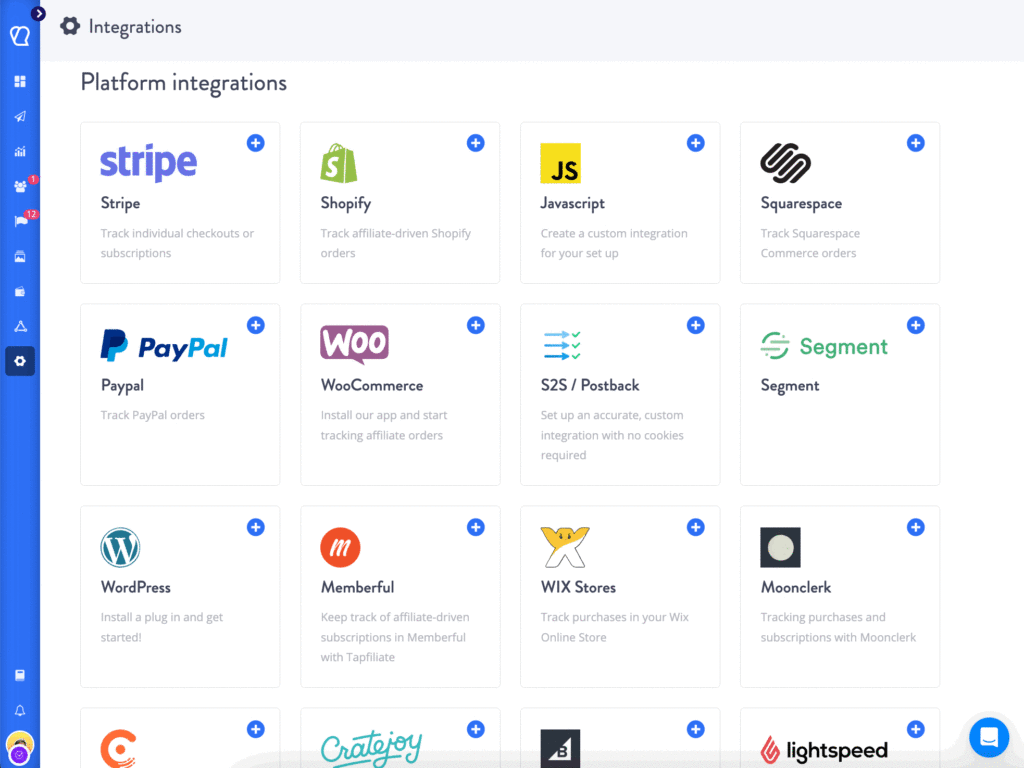
- Postbacks and server-side tracking ensure affiliates are rewarded accurately, even when users switch devices, clear cookies, or pay months later.
- Attribution windows can be customized per campaign, which is key for longer B2B sales cycles.
That’s the invisible layer that makes the rest work. Without it, even the best partnerships collapse under misalignment and payout drama.
2. Automate what doesn’t need a human
A growing affiliate program shouldn’t mean growing admin overhead. Today’s tools let you:
- Auto-approve affiliates based on filters.
- Trigger custom commission tiers based on monthly sales.
- Set up alerts for inactive accounts or referral drops.
- Schedule seasonal campaigns and performance bonuses in advance.
- Affiliate programs are ecosystems. When your systems can scale without crumbling, partners notice and stick around.
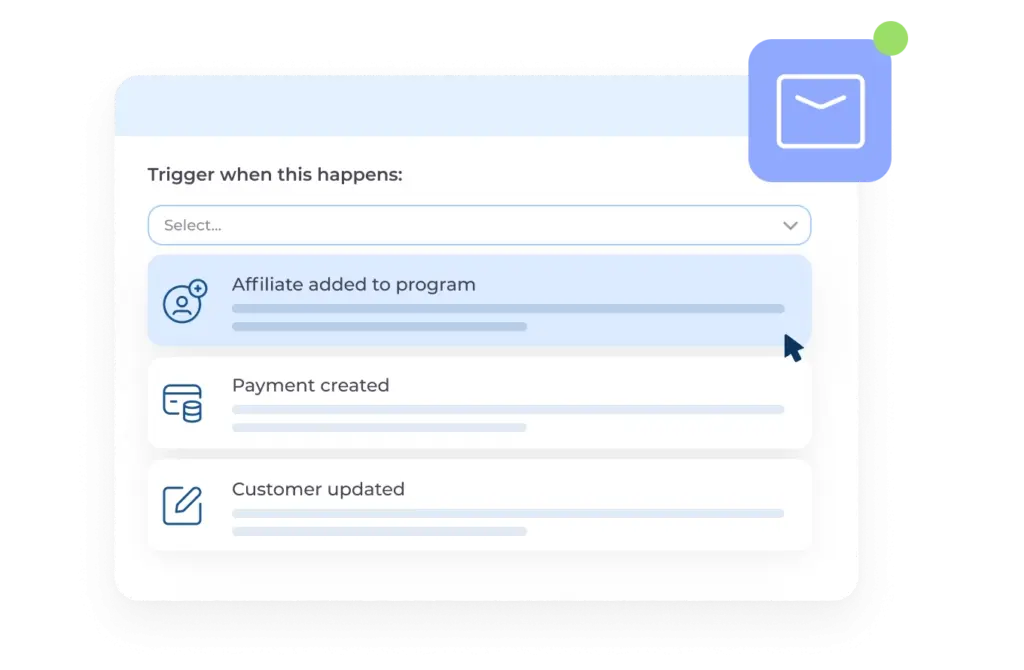
3. Define Goals and KPIs for Success
It’s one thing to launch a program. It’s another to define what success looks like and track the right signals as you grow. In affiliate marketing, bad metrics are everywhere. Good metrics are rare. But they’re what turn your program into a revenue stream instead of just a dashboard hobby.
Don’t fall for vanity metrics
Affiliate count? Clicks? Pageviews? Those numbers might look impressive, but they rarely correlate with real outcomes. The most effective SaaS teams look beyond the surface.
Instead, focus on:
- Affiliate-attributed trial-to-paid conversion rate
- Monthly Recurring Revenue (MRR) from affiliate traffic
- Churn-adjusted LTV of referred customers
- Commission-to-revenue ratio (aka efficiency of your payout structure)
These KPIs show you what’s working, who’s driving it, and where to double down.
Understand the benchmarks
In 2025, the lines between early-stage and mature affiliate programs are clearer than ever. Here’s where most teams fall:
- Early-stage:
- 5-10 active affiliates
- 1-2% conversion from click to paid
- Testing commission structures
- Growth-stage:
- 10-50 active affiliates
- 3-6% conversion
- Recurring commissions or performance-based tiers
- Mature programs:
- 20-30% of all MRR from affiliate sources
- Custom bonuses for top partners
- Integrated CRM workflows and partner enablement content
Keep it reviewable
Metrics mean nothing without rhythm. Set a regular review cadence (monthly at a minimum.) Look at what’s converting, who’s referring, and where drop-offs are happening. Run A/B tests on landing pages, rotate creative kits, and analyze by vertical or campaign type.
4. Build Your Commission Structure and Budget
SaaS affiliate programs live or die by their incentives. Too low, and no one promotes. Too messy, and no one understands. However, when the commission model aligns with your actual business model, specifically your subscription revenue, it creates the kind of predictable, scalable growth that every SaaS marketer is chasing.
Recurring > One-Off
Let’s get something out of the way: flat fees rarely make sense for SaaS. They’re common in e-commerce or lead-gen, where there’s a clear one-time transaction. However, in SaaS, customers typically stay (ideally) for months or years, and your revenue reflects this. A flat payout ignores that long tail and puts you at risk of overpaying on low-retention traffic.
That’s why recurring commissions are the gold standard in this space. They:
- Align perfectly with your MRR/ARR model
- Incentivize affiliates to promote quality over volume
- Encourage long-term collaboration vs one-time campaigns
Most successful programs today offer 15–40% recurring commissions, with the exact number depending on margins, churn, and LTV.
Kit (formerly ConvertKit) offers up to 50% recurring for the lifetime of the customer. It works because their product has strong retention — affiliates are rewarded because users stick.
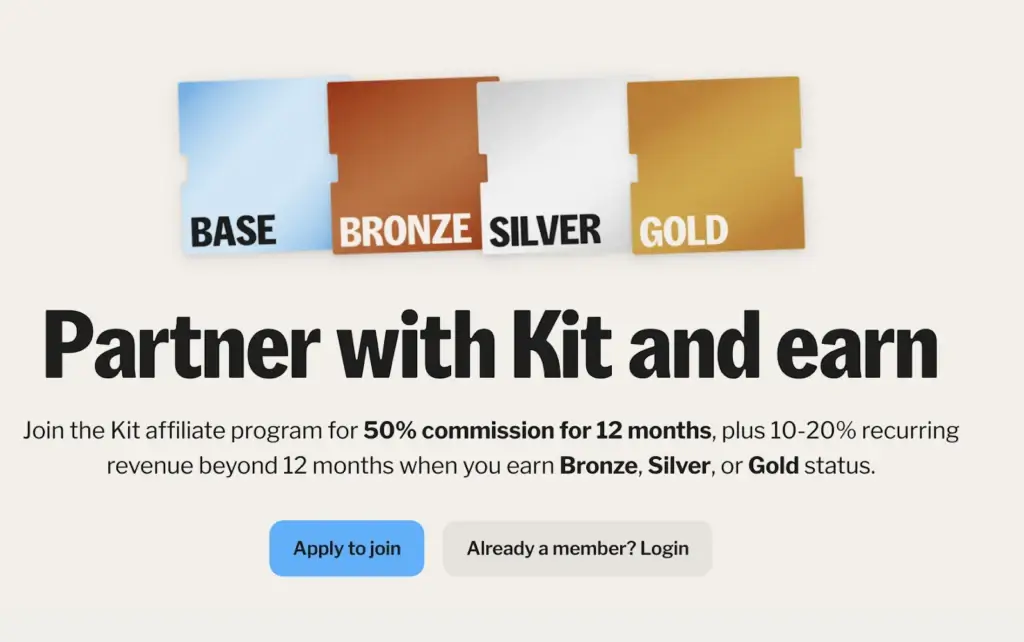
If your average customer pays $60/month and stays 12+ months, offering a 30% rev-share still keeps CAC lower than paid acquisition, especially since you’re only paying on revenue generated.
Tiered structures and performance-based bonuses
Once your program has traction, adding tiers helps create momentum. Tiers reward consistency and scale. A typical example might look like:
- 0–5 signups/month → 20% commission
- 6–15 → 30%
- 16+ → 40
This motivates affiliates to push harder and gives you a framework for segmentation and outreach. You know who your top partners are. You can create Slack channels, offer custom assets, or even run exclusive training sessions for that top 10%.
Even more effective? Performance-based bonuses. These aren’t commissions, they’re accelerators:
- $250 bonus for referring 5+ customers in a month
- $500 bonus when a referred customer stays for 3+ billing cycles
- Seasonal campaigns (Black Friday, launch week, Q4 push) with stacked rewards
Unlike flat commissions, these bonuses let you run experiments without rewriting your core program. And they’re easy to automate with modern affiliate platforms.
With Tapfiliate, you can easily set up extra commissions and performance bonuses to motivate affiliates to spread the word about your product or service even more effectively.
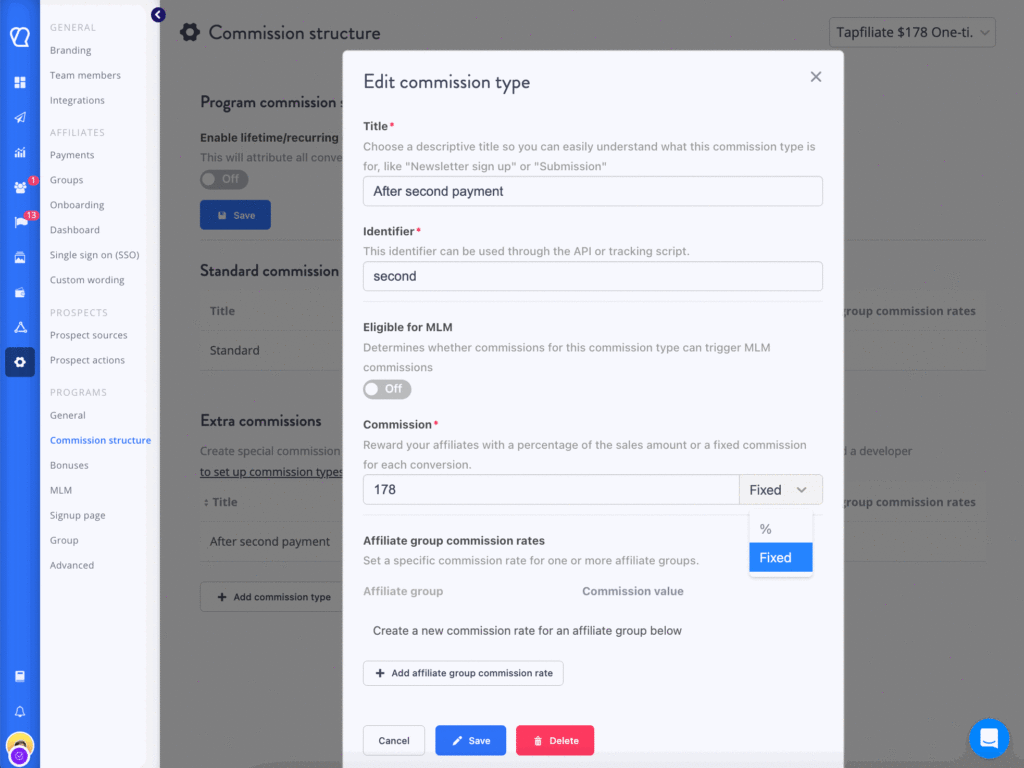
Budgeting for affiliate performance
You don’t need to guess what this will cost. Just reverse-engineer your CAC.
If you’re comfortable paying $200–300 via ads, then offering a $60/mo recurring cut to an affiliate (over a 12-month LTV) keeps you well under budget, and usually with better retention.
What you do need to budget for:
- Commission payouts (tracked monthly or quarterly)
- Top-performer bonuses
- Affiliate management platform fees
- Time for onboarding and relationship-building
No need to overcomplicate it. Start with a recurring model, watch your retention, and layer on bonuses or tiers once the baseline is performing. That’s how smart SaaS teams scale affiliates into a channel that pays off, month after month.
5. Find and Recruit the Right Affiliates
Once your program is technically set up and your commission structure is locked in, the next big unlock is this: recruitment isn’t a numbers game. It’s a relevance game.
In 2025, blasting out links to affiliate directories or cold emailing 300 creators doesn’t cut it. Not only does it dilute your brand, but it clogs your pipeline with affiliates who can’t or won’t drive meaningful traffic. Instead, the top SaaS affiliate programs treat affiliate recruiting like customer acquisition: it’s targeted, segmented, and built on value alignment.
Where to look for quality affiliates
There are five buckets that consistently produce results for SaaS:
- Your own customers
Start here. Your best advocates are already using (and likely recommending) your product. Reach out to power users with a personal invitation. If they’ve had success with your product, they’ll know exactly how to pitch it to others.
Tapfiliate’s automatic affiliate recruitment feature helps you invite your customers to promote your brand with minimum effort.
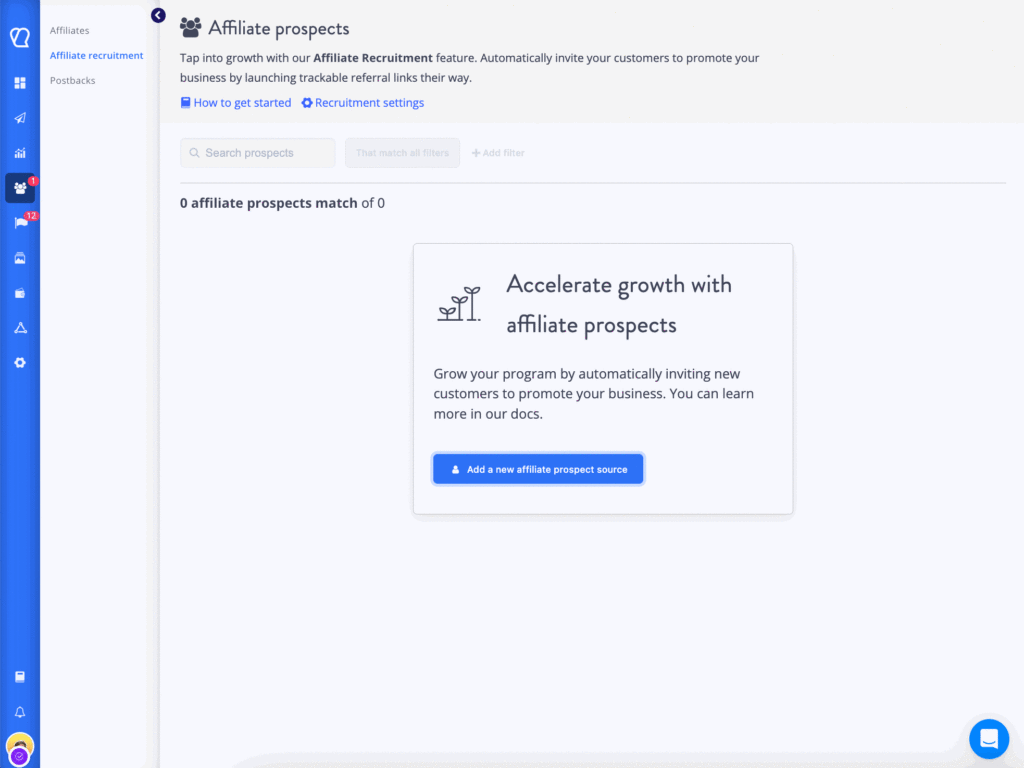
- Niche creators
These are YouTubers, bloggers, and LinkedIn content creators already covering your space. Look for creators talking about the exact pain points your product solves. A quick YouTube search like “best [CRM/email tools/Shopify apps]” will surface potential partners immediately. - Agencies and consultants
If your product solves a recurring client problem, agencies are ideal partners. They can bundle you into onboarding packages, workflows, or retainer services. Offering them recurring revenue gives them an incentive to make you part of their process. - Integration partners
If you integrate with other platforms (e.g., Stripe, Shopify, HubSpot), explore their ecosystem directories or partner forums. Joint webinars and co-branded content can open doors to affiliate-friendly relationships. - Communities
Slack groups, Reddit threads, Discord servers, and industry forums are the spaces where specialists hang out and make tool recommendations daily. But don’t drop a link and vanish. Engage. Offer value. Ask if anyone is interested in early access to your partner program.
How to qualify affiliates that bring value
A big mistake in affiliate recruitment is assuming all traffic is good traffic. It’s not.
Before approving affiliates at scale, ask:
- Do they create original content (vs. just publishing coupons)?
- Is their audience clearly aligned with your ICP?
- Have they promoted other tools like yours? If so, how?
- Do they have traffic, and, more importantly, trust?
You’re not just looking for reach. You’re looking for influence. One niche blogger who ranks top 3 for “best email automation tools” can outperform 50 generalist Instagrammers who’ve never used your product.
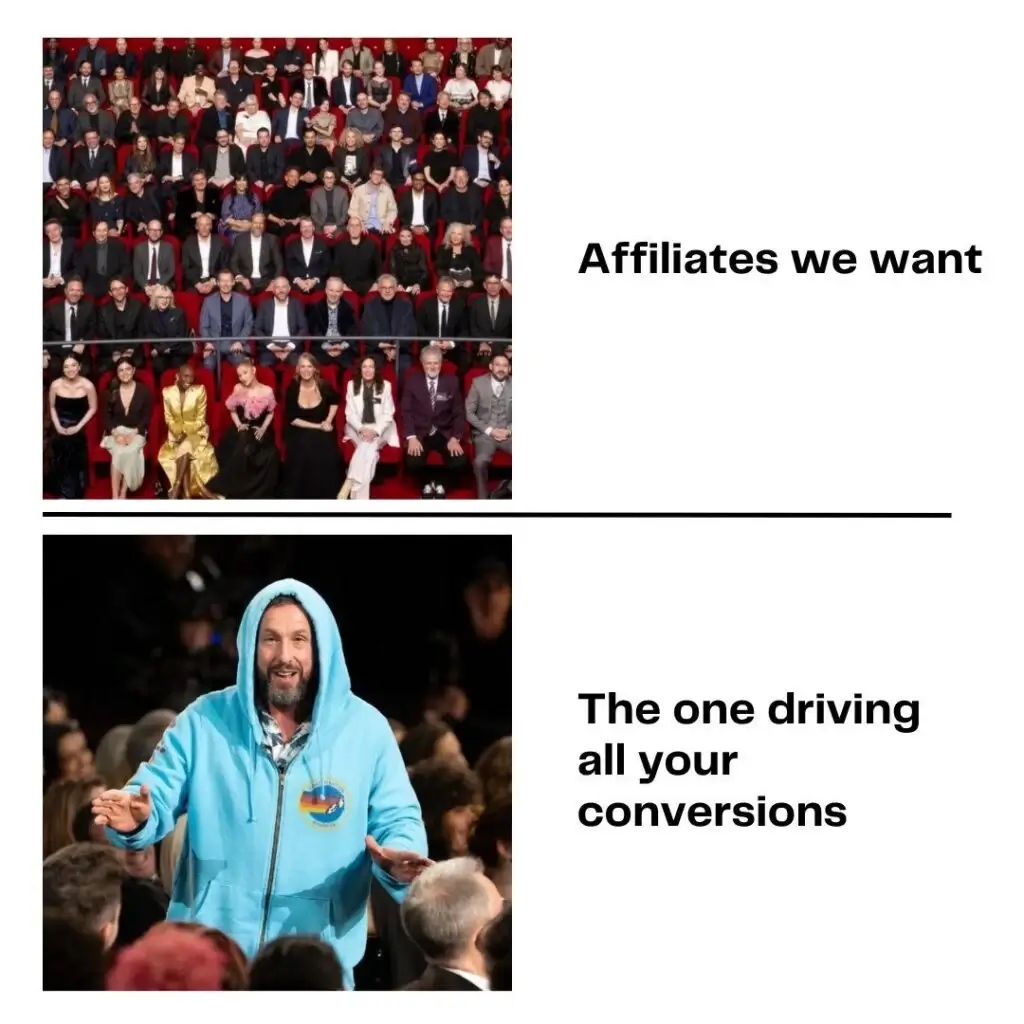
Tools like SparkToro, Ahrefs, and even manual outreach through LinkedIn can surface hidden gems. A simple Boolean search like site:youtube.com “best CRM for startups” or filtering top blogs ranking for commercial-intent keywords will reveal partners who are already influencing purchase decisions.
6. Onboard, Work with, Motivate & Retain Affiliates
Getting affiliates to sign up is the easy part. Getting them to care, consistently promote, experiment, and optimize – that’s the real game. And it starts with something most SaaS companies overlook: treating affiliates like growth partners, not just traffic sources.
Give them something to say
Affiliates aren your traffic brokers. The best ones are storytellers, teachers, and advocates. If you want them to convert, you need to hand them the tools to explain why your product matters.
That means more than banners and logos. Give them:
- Use case guides and customer stories
- Ready-to-go social media blurbs and swipe copy
- Demo videos or product walkthroughs that they can embed or share
- Feature comparisons, especially if your space is crowded
Top-performing affiliate programs don’t just say, “Here’s your link.” They say, “Here’s how to win with our product and make it your own.
Onboarding isn’t a one-and-done
Your new affiliates may get an automated welcome in their first 24 hours (as mentioned before). But the real difference-maker is what happens next, during their first 30 days.
That’s when habits form, when early results land, and when your support has the highest ROI.
What that looks like:
- A drip sequence that delivers product education + promotion tips
- A conversion playbook tailored to their channel (blog, YouTube, newsletter, etc.)
- Nudges triggered by activity (or inactivity): “First click? Here’s what to do next.”
- A check-in if they haven’t earned in 2–3 weeks
If you’re using Tapfiliate or a similar platform, these nudges and sequences are easy to automate, and they deliver big returns.
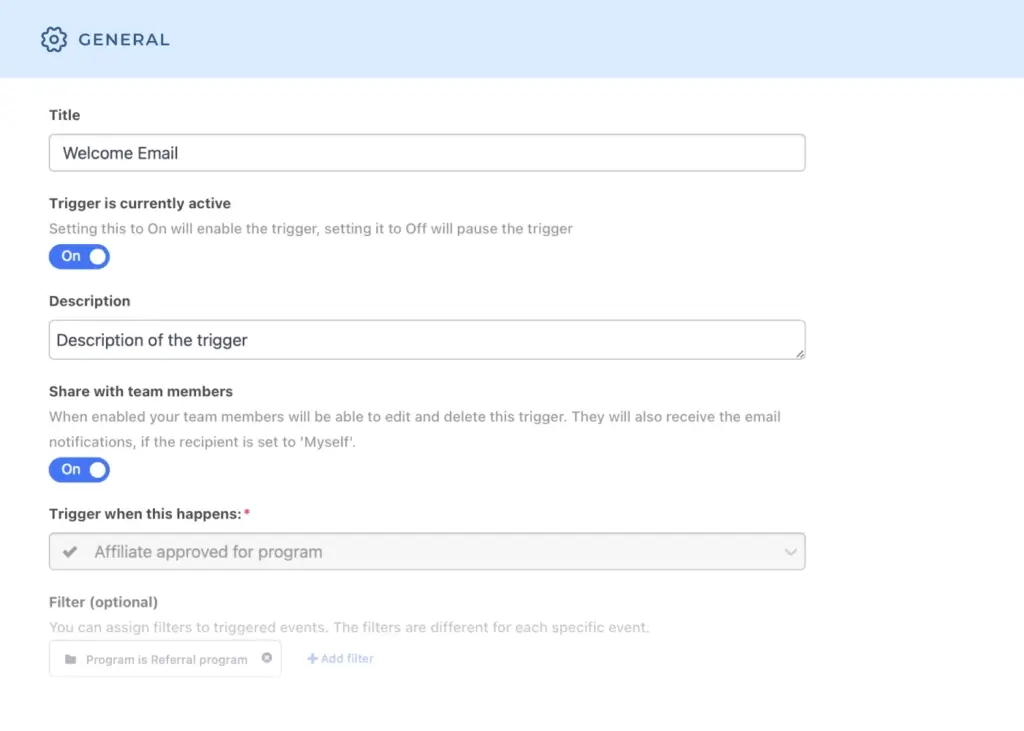
Motivate without micromanaging
Even great affiliates hit slumps. What keeps them going? Smart nudges and strong incentives. A few proven tactics:
- Personal check-ins
“Noticed your traffic dipped this month. Want to review what’s working?” - Leaderboards & contests
Top affiliates love recognition. A simple “Top 3 this quarter wins a bonus + spotlight” goes far. - Seasonal campaigns
Launches, promos, and new features bring affiliates into your marketing calendar and give them something new to promote. - Content refreshes
Every few months, update their resources. Send them new case studies, testimonials, or email swipe copy that aligns with your latest product version.
If your first 10 affiliates are aligned and equipped, they’ll outperform a list of 200 coupon sites by a mile.
How to Scale and Optimize Your Program
Affiliate programs don’t hit a wall — they plateau. The initial wins start to taper off, spreadsheets multiply, and the person managing the program starts juggling support, payouts, recruitment, and optimization… all while wondering when it got this complicated.
Scaling isn’t about doing more — it’s about doing smarter.
Assign internal ownership
A SaaS affiliate program needs a clear owner. Whether it’s your Head of Growth, lifecycle marketing lead, or a dedicated partnerships manager, someone has to:
- Review performance monthly.
- Manage key affiliate relationships.
- Approve or revise commission tiers.
- Coordinate campaigns with marketing.
If no one owns it, the program turns reactive, and that’s when things slip: broken links, unpaid commissions, unmonitored content.
Once it’s performing, consider this your growth channel, not a side project. Treat it like one.
What scaling looks like
Once the basics are humming, scale is about systems, not more affiliates.
That includes:
- Segmenting affiliates by performance
Create Gold, Silver, and Bronze tiers, each with unique resources, support, and commission logic. - Adding vertical campaigns
Run content-specific pushes: e.g., “10 days to promote our new AI feature” or “Launch support week for our Notion integration.” - Publishing an affiliate success hub
Instead of a static resource folder, build a dynamic hub with swipe copy, product videos, FAQs, and monthly tips. - Integrating with your CRM
Tools like HubSpot, Salesforce, or Close can tie affiliate data back into your lifecycle, helping you track referral impact across the funnel.
The goal? Reduce manual work, increase affiliate performance, and stay tightly aligned with revenue goals.
Conclusion
SaaS growth in 2025 is all about stacking all working channels together (no one magic channel will make your revenue skyrocket). And affiliate marketing, when done right, is compounding at its finest. It’s scalable. It’s efficient. And it delivers results only when it works, a dream scenario in a CAC-conscious world.
If you’ve made it this far, here’s what should be clear:
- You don’t need thousands of affiliates. You need the right ones.
- The tools are already here. Setup is no longer a blocker — execution is.
- Recurring commissions, real partnerships, and tight tracking make SaaS affiliate programs not just viable, but high-leverage.
- Most programs fail from poor timing, weak onboarding, or misaligned incentives, but not because affiliate marketing “doesn’t work.”
But the ones that get it right? They’re quietly driving 15–30% of total MRR and turning top partners into long-term collaborators.
So treat affiliates like what they are: not a traffic source, but a distributed sales force. Give them clarity. Incentivize results. Make it easy to win with your product. And you’ll build a channel that scales with you, without ever asking for more budget upfront.
Now turn partners into growth.



















